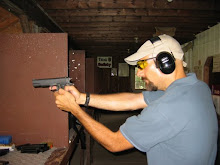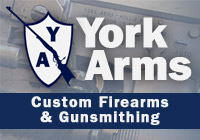Self Defense Findings
The following comes to us courtesy of Claude Werner, Director of Firearms Training LLC. It is an analysis of five years of incidents reported in the NRA "Armed Citizen" column.Go take a read; it's fascinating stuff. I want to call out a few things:
- Private citizens reload in approximately 1/2 of one percent of shooting incidents (3/482).
- The shooting distance in the vast majority of cases was slightly in excess of arm's length.
This is something that Matt of Down Range Firearms Training and I were discussing a few weeks back. One of the exercises that he has students go through starts off touching the target, taking one step back, and firing. So often we train at distances pre-set by the range rules or the gun club, and rarely at the "bad breath" distances in which attacks generally occur.
- The firearm was carried on the body of the defender in only 20% of incidents. In 80% of cases, the firearm was obtained from a place of storage, frequently in another room.
This isn't all that surprising when you think about it - the majority of the stories in the Armed Citizen revolve around home invasions. They're easier to defend in the court of public opinion - by simple virtue of being in someone else's home, the goblin has given very good reason for "why" they got ventilated. It's hard to paint a homeowner defending their castle as a Travis Bickle wanna-be.
Training is still very important; that's not the lesson here. Even if all that's needed to end the fight are two shots from a S&W J-frame, being able to do that under the incredible stress of a life-threatening situation is far easier if it has been practiced over and over until it becomes automatic. Push back, draw, fire. Push back, draw, fire. Lather, rinse, repeat. Practice drawing from concealment and firing as much as you can, even if it's using snap caps in your basement.
Mindset is still the most important thing to survival. Folks can either curl into a ball and hope that the bad person goes away, or they can get angry and fight back. When folks fight back, there's a pretty good body of evidence that indicates they will be successful; at least more successful than rolling over and waiting to die. The whole bit about "better an armed rabbit than an unarmed wolf" is very applicable here - but it's best to be an armed wolf...
Very interesting food for thought indeed...
That is all.







7 comments:
"The most common responses of criminals upon being shot were to flee immediately or expire."
Considering that the point of shooting defensively is to stop a threat, I think it's very nice of assailants to cooperate this way.
I think the observation about lookouts and drivers fleeing at the sound of gunfire is interesting. It says something about their attitude. Robert Heinlein (I think) summed it up: "A bully doesn't want to fight you; a bully wants to beat you up." Faced with the prospect of fighting and possibly getting hurt, they often decide they'd rather be elsewhere.
Emailing that article to all the firearms trainers I know. That's good stuff!
That's why I shared it, Kevin.
It kinda dovetailed with the 8 AM story about the convenience store clerk.
"If you're gonna talk, talk. If you're gonna shoot, shoot". Tuco sums it up nicely...
There's a big flaw in the premise of the study: Using the "Armed Citizen" column as the data mine is like assuming that car wrecks are never fatal because everyone you talked to who'd been in one had lived.
I agree in many ways with what you're saying, Tam. It's one study from one source, but I've found that analysis like this for non-LEO defensive gun use is (for me, at least) hard to find online.
What ARE the threats we are protecting ourselves against? What distances are typical for this sort of stuff? How often is the threat from multiple attackers? Those a surprisingly hard questions to answer with actual numbers.
This report ain't the best but it's what we've got, and anything else out there that can shed additional or different light on this subject would be really useful too.
ExurbanKevin,
Tom Givens does a good lecture based on ten of his students that used their gats.
Does better prepared mean less likely to need preparation?
In other words, the folks carrying Blastomatics ALL the time (including at home) are more aware, lock doors when at home, etc....
Post a Comment